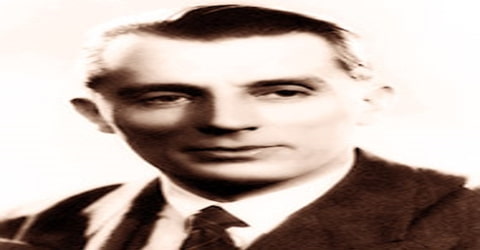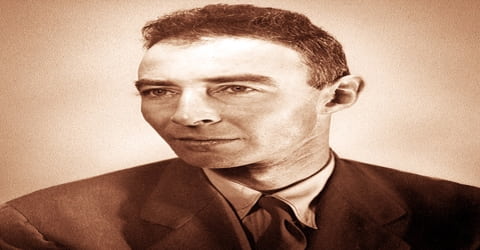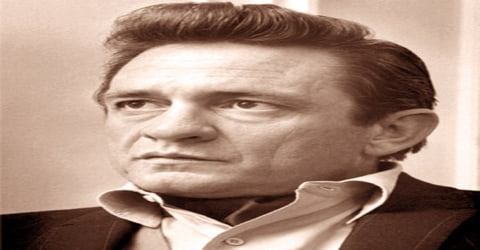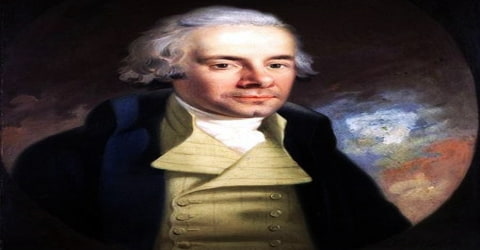Biography of Frédéric Joliot-Curie
Frédéric Joliot-Curie – French physicist.
Name: Jean Frédéric Joliot-Curie
Date of Birth: 19 March 1900
Place of Birth: Paris, France
Date of Death: 14 August 1958 (aged 58)
Place of Death: Paris, France
Occupation: Physicist
Father: Henri Joliot
Mother: Emilie Roederer
Spouse/Ex: Irène Joliot-Curie (m. 1926-1956)
Children: Hélène Langevin-Joliot (b. 1927), Pierre Joliot (b. 1932)
Early Life

A French physicist and Nobel laureate who along with his wife Irene Joliot-Curie is credited with the discovery of artificial radioactivity, Frédéric Joliot-Curie was born in Paris, France, on March 19, 1900, to a merchant father. As a child, Frederic was more inclined towards sports. However, fate had something else in store for him.
After completing his education and service in the military, Joliot turned to take up a research scholarship. On the recommendation of Paul Langevin, he was appointed as an assistant to Marie Curie. This appointment transformed his life, professionally and personally. Frédéric fell in love and married Marie Curie’s daughter Irene Curie. The two of them combined together to research and explore the unknown facets of science. While researching on the structure of atoms and later bombardment of stable nuclides, the two zeroed on artificial radioisotopes. Their scientific research led to the synthesis of new radioactive elements. It was a major breakthrough in the field of chemistry and also won them a Nobel Prize in Chemistry in 1935. Second World War and post-war administrative duties stalled Joliot-Curie’s research work. Towards the end of his career, Frédéric held several important positions including France’s first High Commissioner for Atomic Energy, director of French National Centre for Scientific Research and Chair of Nuclear Physics.
Childhood, Family and Educational Life
Frédéric Joliot-Curie, in full Jean Frédéric Joliot-Curie (French: fʁe.de.ʁik ʒɔ.ljo ky.ʁi), was born on March 19, 1900, to Henri Joliot and Emilie Roederer in Paris, France. His father was a merchant by profession.
Frédéric was a graduate of the École Supérieure de Physique et de Chimie Industrielles de la Ville de Paris. In 1925 he became an assistant to Marie Curie, at the Radium Institute. In 1927, he obtained his licensee’s sciences. He studied further and in 1930, obtained a doctorate degree in science. The topic of his thesis was the electrochemistry of radio elements. Meanwhile, he also taught at the École d’Électricité Industrielle Charliat.
Personal Life
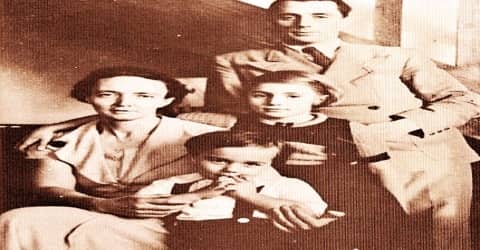
Frédéric and Irène hyphenated their surnames to Joliot-Curie after they married on October 4, 1926, in Paris, France, although their daughter has said, “Many people used to name my parents Joliot-Curie, but they signed their scientific papers Irène Curie and Frédéric Joliot.”
In 1927, the couple was blessed with a daughter, Helena Langevin-Joliot who became a noted physicist and a son Pierre in 1932, who became a biologist. Frédéric Joliot-Curie devoted the last years of his life to the creation of a center for nuclear physics at Orsay, where his children were educated.
Career and Works
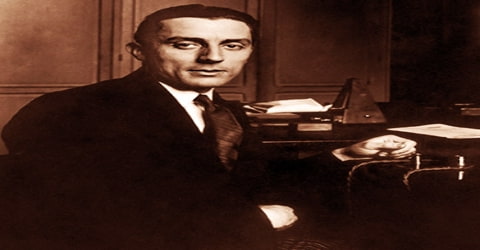
In 1934, Frédéric Joliot-Curie and Irene Joliot-Curie struck the magnum opus of their career with the discovery of artificial radioactivity. The discovery was a milestone in science. For the same, they bombarded boron, aluminum, and magnesium with alpha particles. On bombardment, they obtained radioactive isotopes of elements not ordinarily radioactive, namely, 13 of nitrogen, 30 of phosphorus, 27 of silicon and 28 of aluminum. Since these elements were not found naturally, they decomposed easily emitting positive and negative electrons. It was after the discovery of the artificially produced isotopes that the possibility of using them to follow chemical changes and physiological processes were realized. The isotopes thus discovered were used variedly – the absorption of radioiodine by the thyroid gland was detected, and the course of radiophosphorus was traced in the metabolism of the organism.
In 1935 they were awarded the Nobel Prize in Chemistry for their discovery of “artificial radioactivity,” resulting from the creation of short-lived radioisotopes by nuclear transmutation from the bombardment of stable nuclides such as boron, magnesium, and aluminum with alpha particles.
In 1937, Frédéric left the Radium Institute to become a professor at the College de France, working on chain reactions and the requirements for the successful construction of a nuclear reactor that uses controlled nuclear fission to generate energy through the use of uranium and heavy water. At the time of the Nazi invasion in 1940, Frédéric managed to smuggle his working documents and materials to England. He was one of the scientists mentioned in Albert Einstein’s 1939 letter to President Roosevelt as one of the leading scientists on the course to chain reactions. However, World War II stalled Joliot-Curie’s research, as did his subsequent post-war administrative duties. He was on the ALSOS list, which is the Manhattan Project’s military intelligence effort to capture known enemy nuclear scientists in an attempt to learn how far Germany had progressed in its efforts to develop a nuclear weapon.
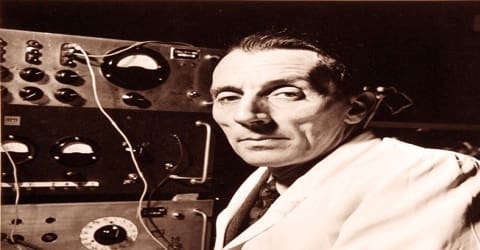
At the time of the French occupation, Frédéric actively took part in the French Resistance. He served as the President of the National Front and later formed the French Communist Party. Post War, in 1945, Joliot-Curie served as the Director of the Centre National de la Recherche Scietifuque (French National Centre for Scientific Research) and later as the French first High Commissioner for Atomic Energy. Two years later, he oversaw the construction of the first French atomic reactor. In 1950, he was relieved of his political duties. He retained professorship at College de France.
Frédéric was one of the eleven signatories to the Russell-Einstein Manifesto in 1955. On the death of his wife in 1956, he took over her position as Chair of Nuclear Physics at the Sorbonne. Frédéric was a member of the French Academy of Sciences and of the Academy of Medicine and named a Commander of the Legion of Honour. He was awarded the Stalin Peace Prize in 1951 for his work as president of the World Council of Peace.
Towards the end of his career, Frédéric Joliot-Curie administered the creation of a center for nuclear physics at Orsay.
Awards and Honor
In 1935, along with his wife, Frédéric Joliot-Curie was awarded Nobel Prize in Chemistry for their discovery of artificial radioactivity.
Frédéric served as the member of the French Academy of Science and Academy of Medicine. He was also named Commander of the Legion of Honour. In 1946, Frédéric was elected as a Foreign member of the Royal Society.
Frédéric Joliot-Curie was the recipient of the first Stalin Peace Prize, given in 1951.
The government of Romania issued a stamp commemorating the achievements by Frédéric Joliot-Curie.
Death and Legacy
Frédéric Joliot-Curie died on August 14, 1958, at the age of 58, in Paris, France.
Frédéric Joliot-Curie’s most important contribution came with his fellow researcher and wife, Irene Curie. Together, the two discovered artificial radioactivity which led to the discovery of short-lived radioisotopes. The discovery was a breakthrough moment in the field of chemistry as it led to the formation of radioactive isotopes of elements that were not found naturally. These isotopes decomposed easily emitting positive and negative electrons.
Frédéric Joliot-Curie appeared as himself in Kampen om tungtvannet (La bataille de l’eau lourde in French; 1948), a French-Norwegian semi-documentary film about sabotage of the Vemork heavy water plant in Norway during World War II. His assistants Hans Halban and Lev Kovarski also appear. Joliot-Curie is shown lecturing about nuclear fission and chain reaction at the Collège de France.
Posthumously, Joliot has a crater on the moon named after him. Furthermore, a street and a metro station in Sofia, Bulgaria are named after him. Other streets in countries that bear his name include Canada, Warsaw, Wroclaw, Poland, Poprad, Bucharest, North Montreal, Romania, Slovakia and so on.
Information Source:
